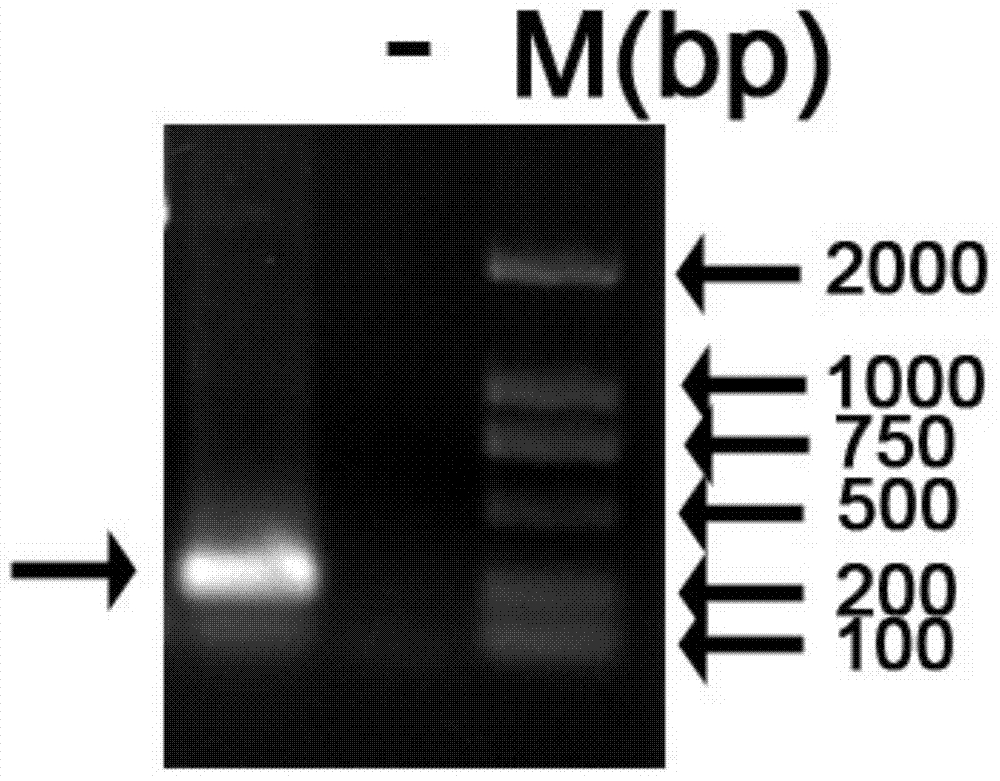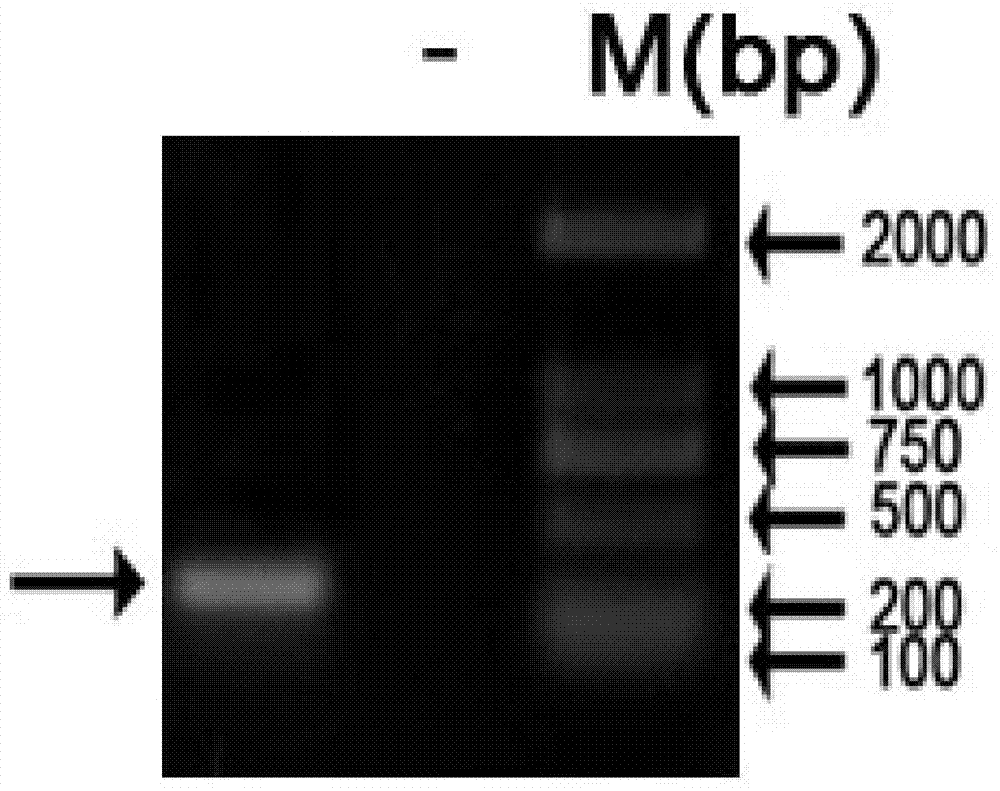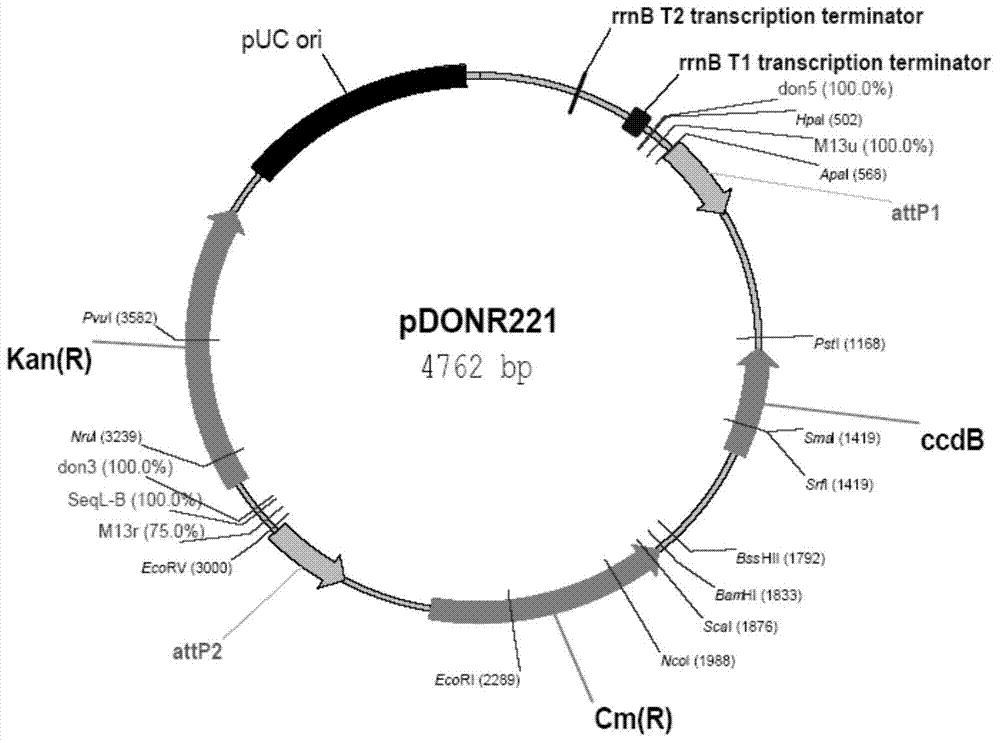Soybean salt-tolerant gene GmCBL3 and application thereof
A salt-tolerant gene and soybean technology, applied in the fields of application, genetic engineering, plant genetic improvement, etc., to achieve the effect of improving salt tolerance and salt/drought resistance
- Summary
- Abstract
- Description
- Claims
- Application Information
AI Technical Summary
Problems solved by technology
Method used
Image
Examples
Embodiment 1
[0017] Cloning of embodiment 1, GmCBL3
[0018] Collection of salt-tolerant soybean germplasm: the inventor of the present invention collected and screened out a kind of salt-tolerant, low-temperature sensitive soybean germplasm (soil salt concentration (‰) in Qijia Village, Mingji Township, Lijin County, Dongying City in October 2009 ): 1.5, latitude / °: 37.59, longitude / °: 118.22, altitude / m: 10). According to the number starting with 37 in Shandong Province, the 1005th resource was named 371005 (Collection Number of Germplasm Resources in Coastal Areas of Shandong Province); its relative salt damage index: 18.00.
[0019] 1.1 Extraction of total RNA from soybean 371005 plants:
[0020] (1) Put the soybean 371005 material into a pre-cooled mortar, add liquid nitrogen and quickly grind it into a uniform powder;
[0021] (2) After the liquid nitrogen volatilizes, quickly transfer the material to a pre-cooled centrifuge tube, add 1ml TRIZOL solution for every 50-100mg of tissu...
Embodiment 2
[0106] Example 2, Agrobacterium-mediated Arabidopsis transformation of soybean GmCBL3 and Arabidopsis AgCBL1 genes
[0107]2.1 Overexpression vector construction
[0108] (1) Referring to the instructions of the Gateway kit, use primers SEQ ID No.4-5 to add a linker to GmCBL3 through the PCR reaction of high-fidelity DNA polymerase, and amplify the full-length fragment of the target gene with the linker:
[0109] P2 (upstream primer): 5'-AAAAAAGCAGGCTTCATGGTGCACTGTTTAGATGG-3' (SEQ ID No.4);
[0110] P3 (downstream primer): 5'-AGAAAGCTGGGTCGCCAACACCAGAGAAACTGA-3'; (SEQ ID No. 5).
[0111] The primers SEQ ID No.6-7 are used to add adapters to AgCBL1 through the PCR reaction of high-fidelity DNA polymerase to amplify the full-length fragments of the target gene with adapters.
[0112] P4 (upstream primer): 5'-AAAAAAGCAGGCTTCATGGGCTGCTTCCACTCAAAGGCAG-3' (SEQ ID No.6);
[0113] P5 (downstream primer): 5'-AGAAAGCTGGGTCTGTGGCAAATCTCATCGACCTCCGAA-3' (SEQ ID No. 7).
[0114] (2) Ta...
Embodiment 3
[0147] Embodiment 3, Arabidopsis thaliana salt tolerance verification of transgenic GmCBL3 and AgCBL1 genes
[0148] (1) Extract the DNA sample of the plant, and utilize the following primers to pass through the PCR reaction of Taq DNA polymerase, verify and obtain the transgenic GmCBL3 gene positive plant,
[0149] P6 (upstream primer): 5'-ATGGTGCACTGTTTAGATGGATTAA-3' (SEQ ID No.8)
[0150] P7 (downstream primer): 5'-TCAGCCAACACCAGAGAAACTGACA-3' (SEQ ID No.9);
[0151] Utilize following primer similarly by the PCR reaction of Taq DNA polymerase, verify and obtain transfection AgCBL1 gene positive plant,
[0152] P8 (upstream primer): 5'-ATGGGCTGCTTCCACTCAAAGGCAG-3' (SEQ ID No.10)
[0153] P9 (downstream primer): 5'-TCATGTGGCAATCTCATCGACCTCC-3' (SEQ ID No. 11).
[0154] (2) Disinfect three different types of Arabidopsis seeds respectively: Arabidopsis wild type (negative control), Arabidopsis transgenic plants overexpressing Arabidopsis AgCBL1 gene (positive control) ) and...
PUM
 Login to View More
Login to View More Abstract
Description
Claims
Application Information
 Login to View More
Login to View More - R&D
- Intellectual Property
- Life Sciences
- Materials
- Tech Scout
- Unparalleled Data Quality
- Higher Quality Content
- 60% Fewer Hallucinations
Browse by: Latest US Patents, China's latest patents, Technical Efficacy Thesaurus, Application Domain, Technology Topic, Popular Technical Reports.
© 2025 PatSnap. All rights reserved.Legal|Privacy policy|Modern Slavery Act Transparency Statement|Sitemap|About US| Contact US: help@patsnap.com



